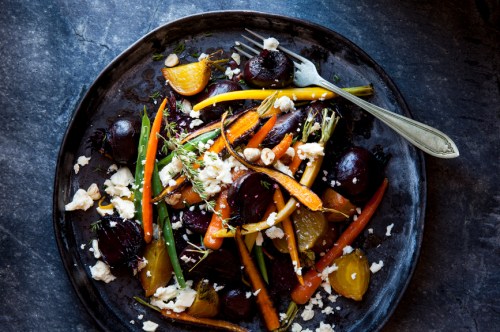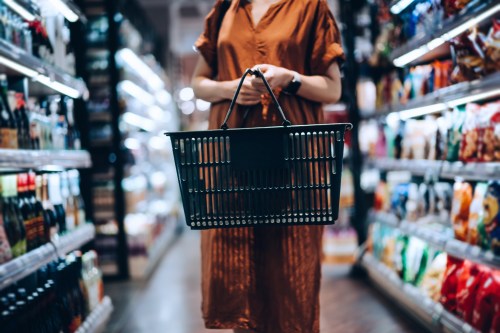If ever there was a low-lift route to a delicious destination, it is undoubtedly via roasting. No matter the ingredient or season, there is rarely (if ever) a time that high heat plus a sheet pan and a drizzle of olive oil do not result in a delectable meal. And this is particularly true when your dish is vegetable-centric.
Given that roasting seems to consist of little more than turning on your oven, properly seasoning your food, and then setting and forgetting the whole thing, it would be reasonable to assert that there is effectively nothing that could go wrong. And that is, in many ways, true. With the exception of forgetting to set aside sufficient time for your ingredients to cook or accidentally burning them to the crisp, it’s pretty difficult to fundamentally upset a pan packed with delicious roasted vegetables.
That said, there are a few easy ways in which you can advance your roasting skills—and therefore your results.
How to roast vegetables faster and more evenly
If you’re looking to give your veggies that beautifully golden-brown caramelization treatment that you’ve only tasted in restaurants, we’ve got you. There is a very simple way to bring that culinary prowess to your own kitchen, and the trick is basically effort-free: Pre-heat your sheet pan.
The simple preheating process is not only the key to nailing the most delicious results at the end of the roasting process, but it is also paramount in starting them off on the right foot. “Sufficiently pre-heating both your oven and your pan is imperative,” says Scott Meyer, the chef and baker behind Oddball Bread. “This is because both the hot air inside your oven and the direct heat from your cooking surface are what caramelizes the outside of your food and lock in texture— whether we’re talking vegetables, protein, or bread. If you don’t reach the high heat necessary for browning quickly, your ingredients will release moisture before they can hold their shape. So when you preheat your sheet pan, you get extra flavor from the immediate heat and the caramelization process.” Moreover, Meyer notes, you will nail the ideal texture for roasted vegetables as well—think crisp, crunchy, and tender rather than soggy-slash-burnt broccoli or potatoes.
The technical term for the beautiful browning that happens in the oven is the Maillard reaction, which describes the chemical interaction between amino acids (i.e. protein) and reducing sugars that gives way to a browned color and that classic caramelized taste. The Maillard reaction is what’s responsible for the delicious crispy edges on fried eggs, the golden brown color of waffles, the caramel flavor that overwhelms chocolate chip cookies, and the sear you relish on grilled salmon.
So, how long do you need to let your roasting pan hang out in the oven before you layer on ingredients? Roughly ten minutes is ideal, which means that placing your sheet tray inside the oven as soon as you switch on the heat is a solid (and effortless) way to get it done. It also means you won’t tack any extra time onto your meal prep.
Why is preheating your pan so effective?
“If you’re cooking proteins or roasting vegetables in an oven and don’t have a hot pan, then the item you’re cooking starts from cold or room temperature,” explains Chef Taylor Burlingame, the executive chef at the Dupont Circle Hotel in Washington, D.C. “You want to achieve a nice Maillard reaction when you’re cooking so that your food is cooked through in the center and nicely browned on the outside,” he continues. “If you don’t have high heat from the get go, by the time the middle is cooked, your vegetables will be burnt on the outside.” Conversely (but equally problematic), you could end up with a nicely roasted exterior of, say, a carrot, but a raw interior. Preheating basically helps you achieve even cooking.
Using a hot pan for roasting becomes even more important if you’re trying to create a seared finish. “If your pan isn’t hot enough to begin with, the natural juices of your vegetables or proteins will leach out,” says David Zamudio, the executive chef at Alma Cocina Latina in Baltimore. “This will cause your ingredients to boil or steam rather than brown or sear.”
Vegetables that are in special need of a hot pan, Zamudio says, include onions and potatoes. “You want to keep juices inside vegetables when they’re in the oven, otherwise they won’t get as crispy or flavorful as you want.”
Perhaps the very best thing about this effectively effortless hack for perfectly roasted vegetables is that it saves you time. Getting your pan up to temperature before you use it actually means that you can keep it in the oven for a shorter period of time—how efficient is that?
So the next time you’re getting ready to turn on your oven, be sure to toss your sheet pan inside as it heats up, too. This will ensure that both your appliance and your cooking surface are up to snuff and ready to give you the beautifully roasted vegetables that you thought was only possible for professionals.
Oh hi! You look like someone who loves free workouts, discounts for cult-fave wellness brands, and exclusive Well+Good content. Sign up for Well+, our online community of wellness insiders, and unlock your rewards instantly.
Sign Up for Our Daily Newsletter
Get all the latest in wellness, trends, food, fitness, beauty, and more delivered right to your inbox.
Got it, you've been added to our email list.











